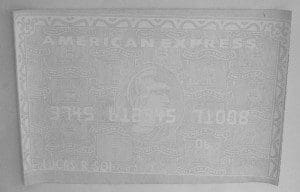
“In 1958 the Canadian company Joseph E. Seagram & Sons commissioned German architect Mies van der Rohe to design their American headquarters in New York City. The skyscraper became one of the most influential architectural designs of the 20th century. In 2000 the Seagram Company Ltd. was acquired by Vivendi, a French conglomerate. In 2009, at the bottom of the worldwide economic recession, Lucas Soi bought back the Seagram Building from its French owners, returning it to Canadian ownership.”
With this condensed, matter-of-fact introduction, Lucas Soi’s solo show, “We Bought the Seagram Building,” invites its audience to partake in an incredible underdog fantasy: when the usual movers of capital lose their grip amid economic crisis, an outsider artist cuts in to regain for his country an architectural marvel with a rich artistic history (Rothko was commissioned to supply art for the building’s interior; Lichtenstein took his place); just when the dust settles, he turns the unlikely transaction itself into art, celebrating his infiltration and sending up the absurdity of the whole situation with ironic cool.
The show seems to be packaged as a populist triumph – We Bought the Seagram Building. “We” could, of course, simply refer to Canadians, a gesture of national solidarity. However, with the exhibition showing at a humble but quickly rising gallery in San Francisco’s Tenderloin district (indeed, the young Ever Gold has something of an underdog story of its own to tell), “we” seems better suited to all the struggling people, artists in particular, who so rarely get the chance to see their side experience such a victory on capitalism’s terms.
But wait; presuming the premise of the show to be true, how on Earth did Lucas Soi afford the Seagram Building? Unless you’re a Damien Hirst or a Jeff Koons, 1,260,683.85 euro is not in an artist’s earnings. “It’s not really clear,” a gallery representative told me, “but he probably didn’t do it alone.” With that, the initial fantasy bursts. “We” shrinks to a select clan that the exhibition declines to acknowledge, let alone expose; the nature and reach of their economic influence remains fully below the show’s surface.
Indeed, the exhibition represents the Seagram Building purchase from an almost fully surface-level perspective. Soi’s remarkably time/labor intensive process – his medium-scale works employ a monochromatic pointillism technique, building representations out of thousands of tiny black dots – serves up images of 1) his American Express “black card” – the most prestigious credit card available with no spending limit (of course, the gallery representative mentioned, it’s not clear Soi actually possesses a black card; the block letters “Lucas R Soi” in its lower left corner could just as easily be part of the representation as an artist’s signature); 2) the Credit Suisse check of the transaction; 3) the façade of the Seagram Building; 4) a topographical plan of the building’s courtyard; and 5) a marijuana bud, executed in a Lichtenstein-inspired style of larger circles, the saturation patterns within yielding the image.
One of these images is, obviously, not like the others, and we may look to that one as the exhibition’s lynchpin. The extent to which marijuana figures into Soi’s purchase (if it does at all, which there is no evidence to suggest) is irrelevant. The black-market good serves as a reminder that, in a virtually boundless system of global capital, no one transaction occurs entirely independently of another; money’s roots run wide and deep. In the eyes of the market, everything on display at Soi’s exhibition – the credit card, the check, the building itself, pot – represents the same abstract substance. Soi’s representational technique helps to underscore this: his works are all composed of identical black dots; stand close enough, and the images will dissolve into just that, setting the question of “we” adrift.
“We Bought the Seagram Building” runs through October 27 at Ever Gold Gallery, 441 O’Farrell St., San Francisco.

2 thoughts on “Some Sort of Triumph: Lucas Soi’s ‘We Bought the Seagram Building’”